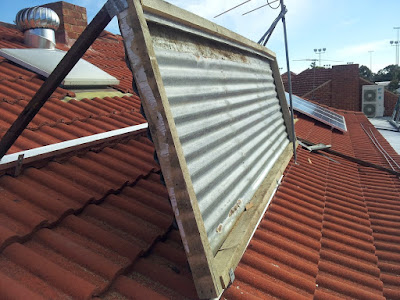Tips for Maintaining Roofs | Naples Roofing
A shed on your head is way too important. So, we decided to jot down some quick and easy tips to maintain your roof. The main purpose of a roof is to protect you from nature but with time, some wear and tear can reduce its longevity. Don’t you worry we’re here to provide you some tips to prolong the life of your roof?
It's very essential to check the shingles on your roof, especially after the wild weather months. But remember: It’s not just wind that can damage your roof, UV light from the sun’s rays can also reduce the life of your roof over time. So be sure to examine your shingles as a regular part of your roof inspections to ensure they’re still installed properly and functioning properly.
If you have trees with overhanging branches, have them trimmed. Heavy snow, wind, ice, and other natural phenomena can whip branches around or pull them from the tree completely, causing damage to the root and the structures around it.
3. Unclog Gutters
Many of us know the problems associated with clogged gutters, which can include bubbling wall paint and rotting wood. But clogged gutters can overflow with so many leaves, bugs, and debris that the rain washes up instead of down. Over time, the water can damage the roof and the support beams that hold it aloft. It will cause a lot of problems, especially the expensive kind. Clean your gutters heading into the spring and fall seasons.
4. Look for moss and Algae
Although moss adds an element of color and a magical forest look to your roof, the damage it causes is no joke. Left to grow, moss will damage roofs of all kinds asphalt, wood, and concrete. Here’s how it happens:
- Moss grows between shingles.
- With time, it will bulk up and actually lift the shingles away from the roof. Hence, the water will get inside.
- Plus, the moss itself holds water. Leaks and wood rot usually follow not far behind.
- You’ll have to scrub the moss away (or hire someone to do it) to prevent damage.
5. Insulate/Ventilate
A roof that’s properly insulated and ventilated is less likely to have excess moisture, which can lead to rot. Have your attic inspected to verify that you have the right and the right amount of insulation.
Ventilation is very important. This is an area of concern that most homeowners are usually unaware of, and PWR makes it a point to remind our customers just how important it is.
A lot of times, they’re surprised to learn the fact that an attic can “sweat.” How?
- Warm air will rise, contact the cold, inside plywood of the roof, and create condensation,
- which inevitably leads to mold growth and rotting plywood.
- Make sure vents are allowing a good amount of air circulation.
Properly insulated roofs can also help prevent ice dams. Conversely, an improperly ventilated roof will make your home even hotter in the summer.
6. Prevent Ice Dams
Roofs are susceptible to ice dams after heavy snowfall. Warm air in the attic causes the roof itself to warm up, melting the snow. Those tricky rivulets of water then refreeze when they reach colder portions of the roof and Voila! ice dams. To prevent ice dams, go recheck your insulation and ventilation to make sure that your attic stays cool enough in the winter to keep ice dams from forming in the first place.
7. Caulk the Flashings
Flashings are those strips of metal (usually aluminum, galvanized metal, or lead) that run along roof edges or joints. Flashing is necessary to divert water or to keep water out of tricky areas that shingles can’t cover, such as roof penetrations where the bathroom and kitchen pipes/vents extend through the surface of the roof. Depending on how they were installed, flashing can rust, crack, lift, or separate, meaning that a vital piece of roof protection is no longer functioning properly. Consider sealing the flashing with caulk at the places where it has become unstuck.




Comments
Post a Comment